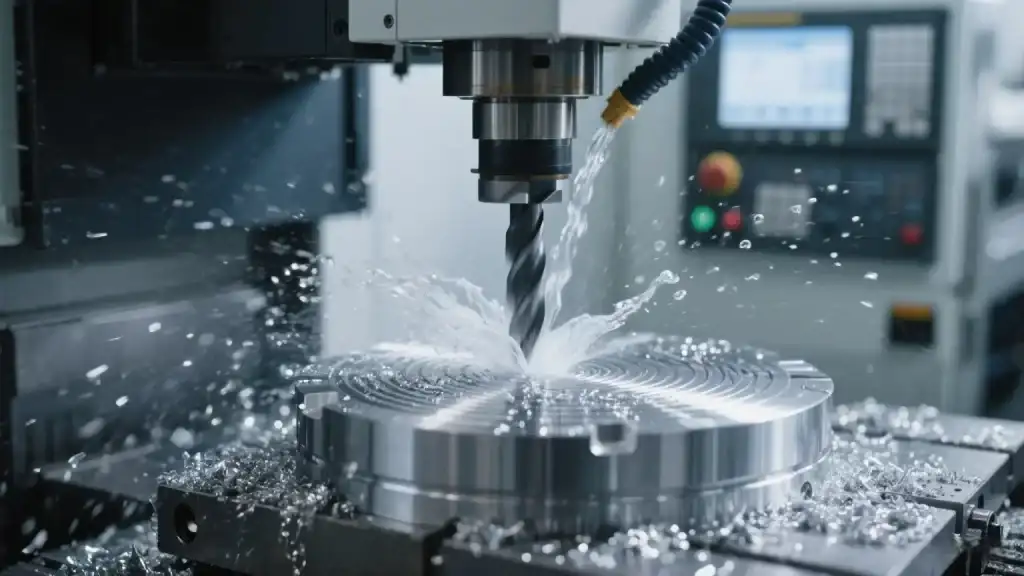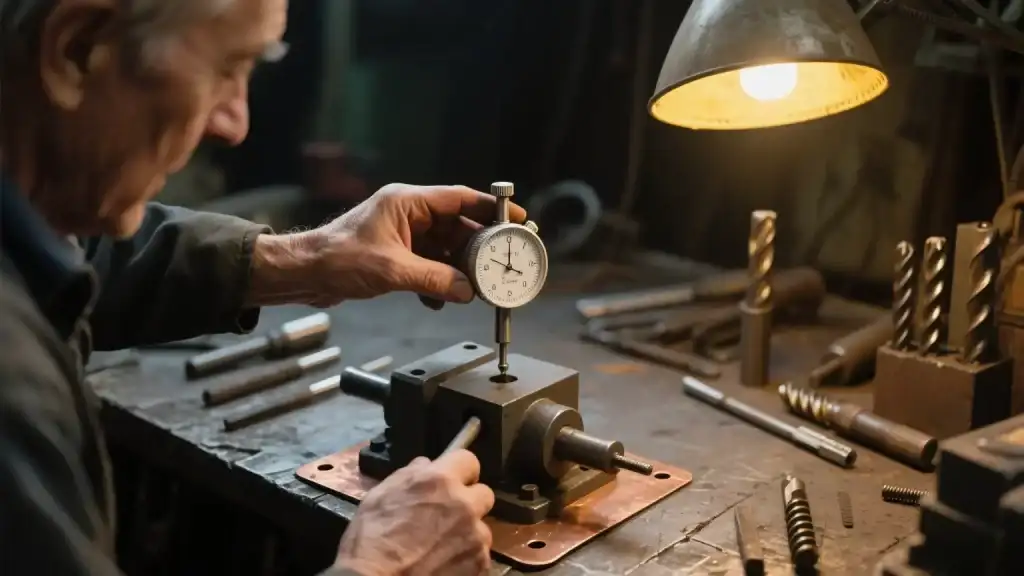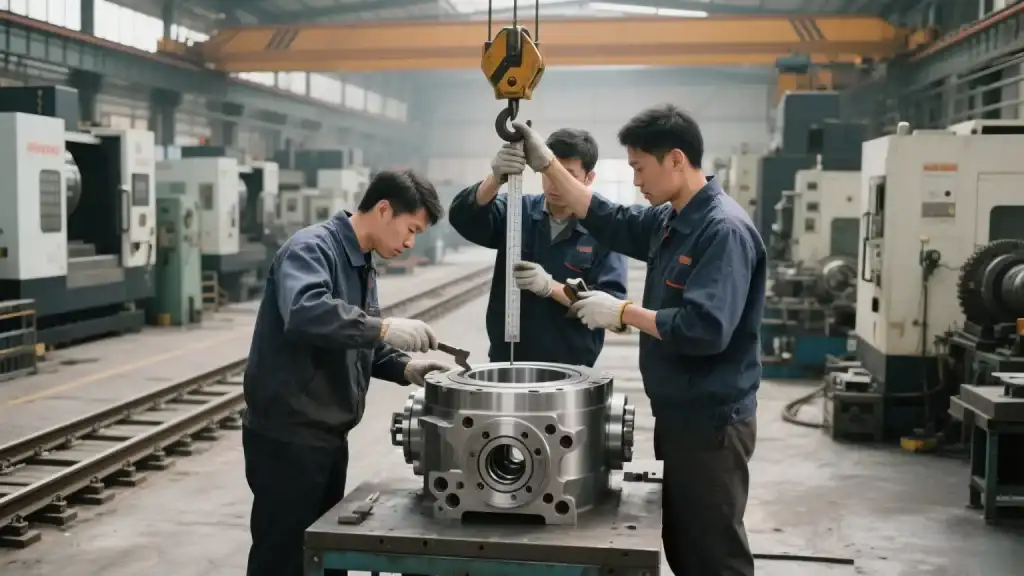CNC Machining vs. Manual Machining: How to Choose?
In manufacturing, the choice of machining method is never trivial. Do you go with highly automated CNC machining, or rely on the seasoned hands of a skilled machinist using manual techniques? This decision doesn’t just affect part accuracy and consistency—it directly influences production efficiency, cost structure, and even your company’s competitive edge.
This article breaks down the core differences between CNC and manual machining across seven key dimensions: control logic, precision, cost analysis, application scenarios, hybrid workflows, skill requirements, and equipment selection—helping you make smarter, more strategic decisions.
Who Wins in Precision: CNC or Manual?
CNC Machining: The “Digital Brain” Behind Precision

A CNC machine operates as a closed-loop control system, driven by digital intelligence:
- Servo motors drive ball screws, with real-time position feedback from encoders or linear scales;
- G-code, post-processed CAM toolpaths, and PLC logic are interpreted layer by layer to enable multi-axis interpolation;
- Command-to-execution latency is typically under 10 milliseconds, enabling high-speed cutting and continuous machining of complex contours.
In essence, a CNC machining center acts like a “digital brain,” executing repetitive tasks with exceptional consistency and stability. It excels at drilling, tapping, boring, fixed cycles, and multi-sided part automation.
Manual Machining: Where Skill Meets Touch

Manual machines operate as open-loop systems, relying entirely on operator judgment and tactile feedback:
- Control methods: handwheels, feed levers, dial indicators;
- Sources of error: visual misjudgment, hand tremors, inconsistent feed rates, and fatigue;
- Even experienced machinists typically achieve only ±0.02 mm repeatability—and maintaining that over time is challenging.
Even with a Digital Readout (DRO), manual machines can’t run automated cycles or follow intricate toolpaths, limiting their use in high-precision applications.
Is CNC More Expensive? Real-World Cost Analysis vs. Manual Methods
Case 1: Φ25h6 Shaft (Aluminum Alloy)
- CNC Lathe: Dimensional standard deviation σ ≤ 0.003 mm; surface roughness Ra 1.4–1.7 μm;
- Manual Lathe: Same operator variation ±0.015 mm; inter-team variation up to ±0.04 mm; surface finish fluctuates between Ra 1.2–2.0 μm.
Verdict: CNC delivers far superior dimensional consistency and surface quality—ideal for high-interchangeability batch production.
Case 2: Mold Cavity (H13 Steel, Hardened to HRC48)
- 5-Axis CNC Machining Center: Uses contour roughing and flow-line finishing strategies. Cycle time: 4.2 hours per piece; surface deviation < 0.02 mm;
- Manual Approach: Relies on electrode alignment and hand polishing. Local errors exceed 0.15 mm, with drastically lower efficiency and inconsistent results.
Verdict: For complex 3D surfaces, manual methods simply can’t compete in either accuracy or speed. Precision machining technology is the only viable solution for such demanding parts.
When to Use CNC? When Does Manual Make More Sense?
Scenarios That Demand CNC Machining
- Geometric tolerances ≤ 0.05 mm on drawings;
- Multi-sided parts (requiring machining on four or more faces);
- Batch sizes ≥ 200 pieces with high interchangeability needs;
- Deep hole drilling, thread milling, or other complex fixed cycles;
- Parts requiring automatic tool changes on a vertical CNC milling machine.
Where Manual Machining Still Shines
- One-off repair jobs or emergency fixes;
- Non-standard assembly components (e.g., scraped guide rails);
- Castings or forgings with uneven stock, requiring real-time adjustment;
- Training and skill development in machining fundamentals.
Can CNC and Manual Work Together? 3 Hybrid Workflow Models
In real-world manufacturing, CNC and manual methods aren’t rivals—they’re partners. Combining both creates flexible, efficient hybrid workflows.

1. CNC Roughing + Manual Finishing
- Applications: Wind turbine gearbox housings, large pump or valve bodies
- CNC removes over 90% of material, ensuring accurate datums and hole positions;
- Manual scraping perfects sealing surfaces, achieving optimal contact and fit.
2. Manual Prototyping + CNC Mass Production
- Start with skilled machinists manually crafting prototypes to validate design feasibility;
- Once the first article is approved, use 3D scanning to reverse-engineer the model and generate CNC programs;
- Then transfer to a vertical CNC machining center for stable, repeatable production.
3. Specialized Manual Processes
- Spotfacing deep internal cavities—manual control allows better tool angle adjustment and avoids interference;
- Hand-scraping guide rails creates micro-textures that enhance lubrication and wear resistance—something CNC machines struggle to replicate.
What Skills Do You Need? CNC Operators vs. Manual Machinists
| SKILL AREA | CNC OPERATOR | MANUAL MACHINIST |
|---|---|---|
| Tool Selection | Chooses inserts based on ISO codes, coatings | Grinds drill points, adjusts point angles (118° or 135°) |
| Cutting Parameters | Adjusts feed rate and spindle speed via HMI | Listens for chatter, manually adjusts feed rhythm |
| Troubleshooting | Reads error codes, replaces servos, etc. | Identifies gear noise, belt slippage, mechanical wear |
| Fixturing | Uses edge finders, sets tool offsets | Dials in workpieces with dial indicators for perfect alignment |
| Inspection | Uses probing for in-process measurement | Relies on micrometers, plug gauges, and manual checks |
CNC operators need digital fluency and an understanding of program logic, while manual machinists thrive on tactile experience and instinct.
Equipment Selection Guide: How to Decide?
Choose CNC If:
- Annual machining hours exceed 1,500;
- Each part requires ≥ 5 processing steps;
- ≥ 3 different tools are needed per part;
- You need to save programs for repeat jobs or quality traceability.
Stick with Manual Machines If:
- Your main tasks involve equipment repair, emergency work, or small-batch custom jobs;
- You have access to highly skilled, certified machinists;
- Power supply is unstable, or initial equipment investment is a major constraint.
Conclusion: Balancing CNC and Manual Machining
In summary, CNC machining dominates in high-precision, high-volume, and complex-part production, offering unmatched consistency, speed, and traceability. Meanwhile, manual machining remains irreplaceable for repairs, prototyping, custom fitting, and specialized processes—where human adaptability and craftsmanship add unique value.
The key is understanding the strengths of each method and strategically balancing vertical CNC machining centers with traditional manual equipment. For small or mid-sized manufacturers lacking in-house capabilities, outsourcing to a reliable precision machining manufacturer can be a smart, flexible alternative—letting you scale production without heavy capital investment.
Smart manufacturing isn’t about choosing one over the other—it’s about knowing when to use each.



